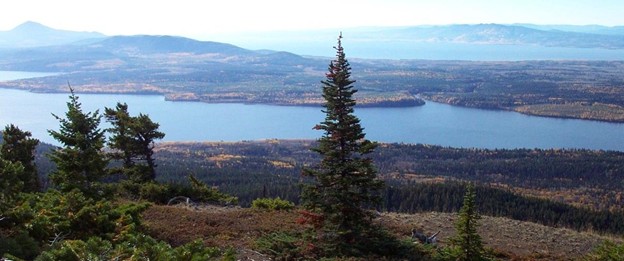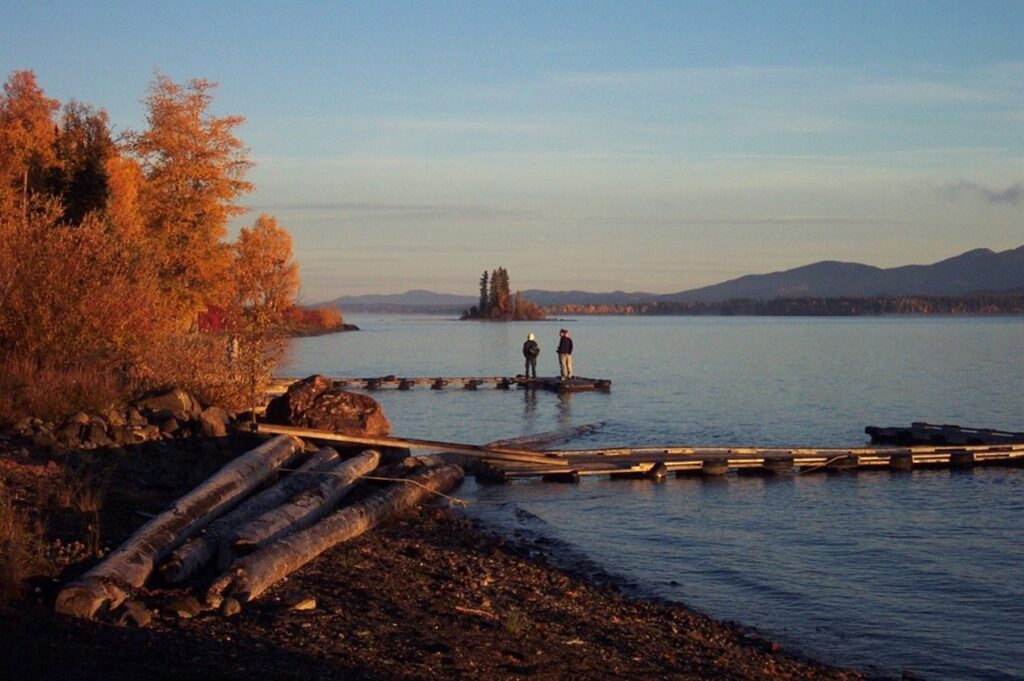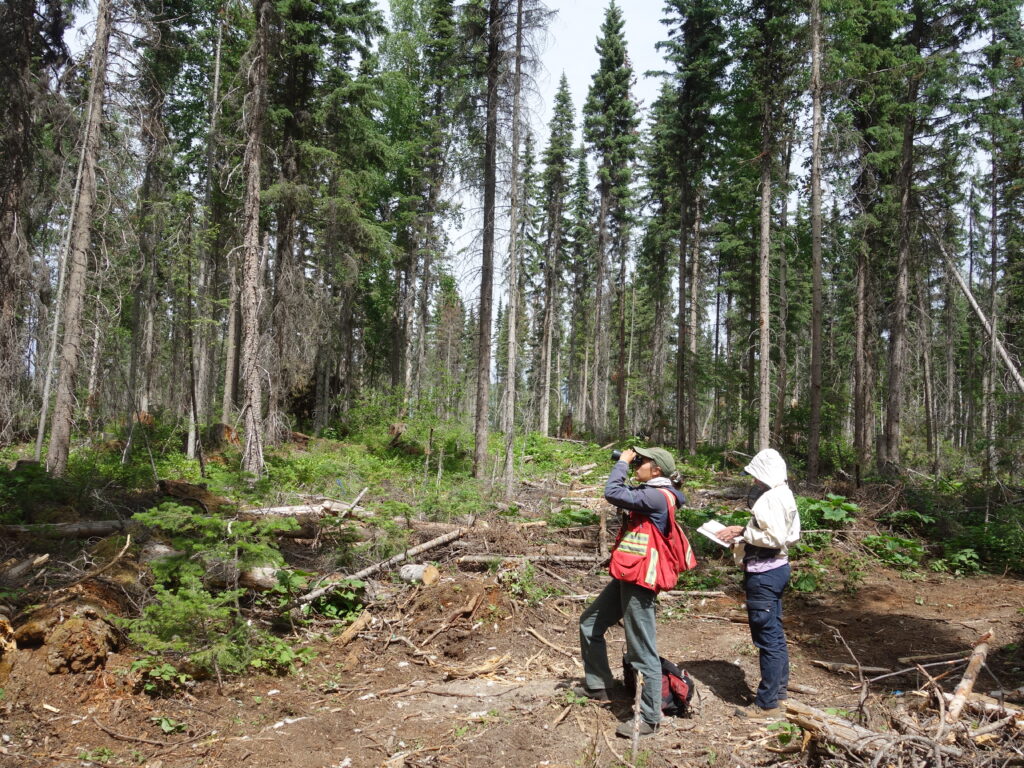John Prince Research Forest
Site Description

Key Projected Climate Change Impacts

John Prince Research Forest
- Increased summer and winter temperatures leading to modeled shifts away from the sub-boreal spruce classification and climate mismatches with ecosystem components such as insect life cycles and plant phenology.
- Climate models predict significant changes to how much and at what frequency and intensity precipitation will arrive in this region, leading to increased risk of drought stress, altered site hydrology, and changing fire regimes, all affecting forest composition, health, and productivity.
Climate change will present challenges and opportunities for accomplishing the management objectives of the John Prince Research Forest, including:
Challenges
- Altered habitat — Species such as hybrid white spruce are at risk of shifted or reduced suitable habitat within the study region. A temporal mismatch in climatic change versus species migration could increase stress and disturbance risk before a different or novel ecosystem assemblage establishes. A stable and resilient forested ecosystem also may have difficulty establishing in the wake of major disturbance if the extant forest is not sufficiently resilient to absorb the impacts of climate change. Cultural knowledge and practices that are tied to natural ecosystem linkages and processes and existing ecosystem plant and wildlife assemblages could be disrupted or lost during transitions.
- Altered hydrology — Related to habitat changes. Even with an increase in overall precipitation, variability in delivery, surface runoff (with increased potential for water quality degradation), and evapotranspiration rates means there is an increased possibility of drought stress events during warmer months. Additionally, it is predicted that regional hydrology will be decreasingly driven by snowpack dynamics, as early breakup and more frequent rain on snow events decrease the volume and duration of snow cover, affecting growth dynamics and wildlife habitat.
- Altered fire regime — Stands in the sub-boreal spruce zone historically burn on a 100-200-year interval. As hydrology changes, a shortening or intensifying of this fire cycle by periods of increased drought stress could increase the severity of wildfire, potentially changing community composition, favoring early-seral species such as paper birch and trembling aspen, to the exclusion of later-stage species such as Douglas-fir, hybrid white spruce, and subalpine fir.
- Altered threat interaction — Climate change can increase the risk from endemic and novel pests and pathogens including:
-
- Blister and gall rusts
- Tomentosus root rot and other root disease
- Dothistroma needle blight,
- Mountain pine, Douglas fir, and spruce beetle outbreaks
- Defoliator outbreaks Hardwood diseases
-

Opportunities

Photo credit NAME, John Prince Research Forest.
- Altered habitat — novel habitat suitability can carry the opportunity of new and potentially diverse species compositions, including western red-cedar, ponderosa pine, western larch, and others. Increasing the relative abundance of current and novel species that are adapted to future conditions can produce a more resilient and productive forest.
- Carbon storage — provided there is sufficient additional precipitation, some northern forests may show increased productivity.
Management Goals & Treatments
Implementation
What approach best prepares forest ecosystems for climate change? Adaptation options occupy a continuum of management goals related to their levels of desired change. A team of natural resource specialists and researchers familiar with the John Prince Research Forest convened for a virtual workshop in the June 2021 to co-produce the study design for the ASCC project site. The team developed a set of desired future condition statements, objectives, and tactics for each major climate adaptation trajectory:
Resistance

Resilience

Transition

Monitoring
Monitoring is an essential component of the ASCC study. Research partners from many institutions are working together to investigate the effectiveness of different silvicultural treatments aimed at creating adaptive ecosystems. Some of the monitoring items include:
- Survival and growth of planted seedlings
- Residual tree survival and growth
- Microclimate conditions
- Culturally important understory species
- Overstory species mixture
- Endemic and novel pest presence and levels
Progress & Next Steps
The four adaptation treatments (control, resistance, resilience, and transition), as well as a clear-cut with retention treatment, where replicated four times across a 490-acre (200-hectare) area on the John Prince Research Forest. During the summer of 2021 field crews collected pre-harvest, baseline data on forest overstory, midstory, shrub layer, understory, regen, and CWD. Winter harvesting was performed in January and February 2022. During the summer of 2022 field crews established permanent sample plots and re-measured stand structure and the vegetation communities immediately following harvest.
Planting across all treatments was completed in 2023 and ongoing. survival monitoring and collection of individual seedling data continues. Baseline forest health data was collected on a subset of the permanent sample plots in 2023.
Site Leads & Partners
Dr. Che Elkin, (University of Northern British Columbia), Sue Grainger (University of Northern British Columbia), and Dr. Kristen Waring (Northern Arizona University), and Dexter Hodder (JPRF, University of Northern British Columbia) are the site leads for the John Prince Research Forest ASCC site. Key partners include Colorado State University, Natural Resources Canada, B.C. Ministry of Forest, and the Northern Institute for Applied Climate Science.

Ché Elkin
Site Lead
Associate Professor
Ecosystem
Science & Management Program
University of Northern British Columbia
Forestry Sciences Laboratory
3333 University Way
Prince George, B.C. V2N 4Z9
Phone: 250-960-5004
che.elkin@unbc.ca

Sue Grainger
Site Lead
John Prince Research Forest
Box 2378
Fort St James, BC, Canada, V0J 1P0
Phone: 250-996-3700
grainger@unbc.ca

Kristen Waring
Site Lead
Professor – School of Forestry
College of the Environment, Forestry,
and Natural Sciences
Northern Arizona University
Southwest Forest Science Complex,
200 E Pine Knoll Dr
Flagstaff, AZ 86011
Phone: 928-523-4920
Kristen.Waring@nau.edu


Dexter hodder
Site Lead
John Prince Research Forest,
Director, Research and Education
John Prince Research Forest
Box 2378
Fort St James, BC, Canada, V0J 1P0
Phone: 250-996-3700
